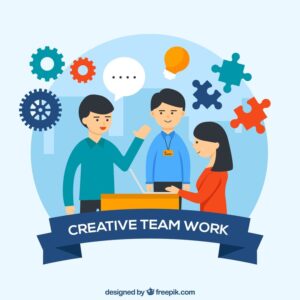How to create a comprehensive and inclusive work environment in small and medium-sized companies
introduction
In today’s competitive business landscape, small and medium-sized enterprises (SMEs) are increasingly focusing on creating work environments that foster productivity, collaboration, and employee satisfaction. Establishing a comprehensive and integrated work environment not only enhances operational efficiency but also boosts morale and retention rates among employees.
Key Steps to Establish a Comprehensive Work Environment:
Define Clear Goals and Values: Clearly articulate the company’s mission, vision, and values. This provides employees with a sense of purpose and direction, aligning their efforts towards common objectives.
Promote Open Communication: Foster a culture of open communication where employees feel comfortable sharing ideas, concerns, and feedback. Utilize both formal channels (like regular meetings and performance reviews) and informal methods (such as team-building activities and open-door policies).
Encourage Collaboration: Design workspaces that facilitate collaboration. Consider open-office layouts, collaborative tools and technologies, and cross-functional project teams to encourage knowledge sharing and innovation.
Prioritize Employee Well-being: Support employee well-being by offering wellness programs, flexible work arrangements, and ergonomic workspaces. A healthy workforce is more engaged and productive.
Invest in Training and Development: Provide opportunities for continuous learning and skill development. This not only enhances employee capabilities but also demonstrates a commitment to their professional growth.
Embrace Diversity and Inclusion: Create an inclusive work environment that values diversity in perspectives, backgrounds, and experiences. Diversity fosters creativity and helps in developing a broader market perspective.
Implement Technology Solutions: Leverage technology to streamline processes and improve efficiency. Use project management tools, communication platforms, and HR software to simplify tasks and enhance connectivity.

Frequently Asked Questions (FAQs):
- How can SMEs ensure employee engagement in a small team environment?
Foster open communication and encourage participation in decision-making processes.
Recognize and reward achievements to boost morale.
Provide opportunities for professional development and career advancement.
- What role does leadership play in creating an integrated work environment?
Leadership sets the tone for company culture and values.
Effective leaders inspire trust, encourage collaboration, and promote a positive work environment.
- How can SMEs measure the effectiveness of their work environment initiatives?
Conduct employee surveys and feedback sessions to gauge satisfaction and identify areas for improvement.
Monitor key performance indicators (KPIs) related to productivity, turnover rates, and employee engagement.
Conclusion
By focusing on these key strategies, small and medium-sized enterprises can create a work environment that enhances productivity, fosters innovation, and promotes employee well-being. Investing in a comprehensive and integrated work environment not only benefits the company’s bottom line but also strengthens its position as an employer of choice in today’s competitive job market.



















